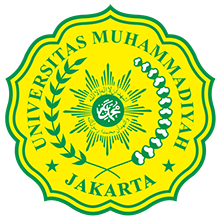MODEL KONSEPTUAL FAKTOR PENDORONG NIAT SEBAGAI FASILITAS PENGUMPULAN MINYAK GORENG BEKAS SEBAGAI INISIASI JARINGAN REVERSE LOGISTICS
Abstract
Keywords
Full Text:
PDFReferences
Abdissa, G., Ayalew, A., Dunay, A., & Illés, C. B. (2022). Role of Reverse Logistics Activities in the Recycling of Used Plastic Bottled Water Waste Management. Sustainability (Switzerland), 14(13), 1–20. https://doi.org/10.3390/su14137650
Ajzen. (2011). The theory of planned behaviour: Reactions and reflections, Psychology & Health, 26(9), 1113-1127. https://doi.org/10.1080/08870446.2011.613995
Beleya, P., Abu Bakar, M. A., & Chelliah, M. K. (2017). Impact of reverse logistics in the malaysian electrical and electronics industry. International Journal of Supply Chain Management, 6(3), 91–101.
Bouzon, M. (2015). Evaluating Drivers and Barriers for Reverse Logistics Implementation Under a Multiple Stakeholders’ Perspective Analysis Using Grey-Dematel Approach. 207.
Bouzon, M., Govindan, K., & Rodriguez, C. M. T. (2020). Grey dematel technique for evaluating product return drivers: A Multiple stakeholders’ perspective. Environmental Engineering and Management Journal, 19(1), 19–36. https://doi.org/10.30638/eemj.2020.003
Budijati, S. M., Astuti, F. H., & Jatiningrum, W. S. (2023). Conceptual Model of Inhibiting Factors to Intent as Waste Cooking Oil Collection Facility Model Konseptual Faktor Penghambat untuk Berniat sebagai Fasilitas Pengumpulan Minyak Goreng Bekas. 16(1), 84–93.
Chileshe, N., Rameezdeen, R., Hosseini, M. R., Martek, I., Li, H. X., & Panjehbashi-Aghdam, P. (2018). Factors driving the implementation of reverse logistics: A quantified model for the construction industry. Waste Management, 79, 48–57. https://doi.org/10.1016/j.wasman.2018.07.013
de Albuquerque Landi, F. F., Fabiani, C., Castellani, B., Cotana, F., & Pisello, A. L. (2022). Environmental assessment of four waste cooking oil valorization pathways. Waste Management, 138, 219-233.
Direktorat Statistik Distribusi, 2023, Distribusi Perdagangan Komoditas Minyak Goreng di Indoensia 2023, Vol 6 tahun 2023, Badan Pusat Statistik
Eltayeb, T. K., & Suhaiza, Z. (2011). Drivers on the reverse logistics : evidence from Malaysian certified companies Tarig Khidir Eltayeb and Suhaiza Hanim Mohamad Zailani *. International Journal of Logistics Systems and Management, 10(4), 375–397.
Farooquie, J. A., & Abbas, H. (2020). Reverse logistics practices in Indian pharmaceutical supply chains: a study of manufacturers. International Journal of Logistics Systems and Management, 35(1),72. https://doi.org/10.1504/ijlsm.2020.10025513
Fikru, B. (2020). Analysis of Reverse Logistics Practice Of Water And Soft Drink Plastic Bottle Companies In Addis Ababa. In Bussiness Law binus. St. Mary University.
Foo, P. Y., Lee, V. H., Tan, G. W. H., & Ooi, K. B. (2018). A gateway to realising sustainability performance via green supply chain management practices: A PLS–ANN approach. Expert Systems with Applications, 107, 1–14. https://doi.org/10.1016/j.eswa.2018.04.013
Gahana Gopal, C., Patil, Y. B., K.T, S., & Prakash, A. (2018). Conceptual frameworks for the drivers and barriers of integrated sustainable solid waste management: A TISM approach. Management of Environmental Quality: An International Journal, 29(3), 516–546. https://doi.org/10.1108/MEQ-10-2017-0117
Govindan, K., & Bouzon, M. (2018). From a literature review to a multi-perspective framework for reverse logistics barriers and drivers. Journal of Cleaner Production, 187, 318–337. https://doi.org/10.1016/j.jclepro.2018.03.040
Henriques, J., & Catarino, J. (2016). Motivating towards energy efficiency in small and medium enterprises. Journal of Cleaner Production, 139(2016), 42–50. https://doi.org/10.1016/j.jclepro.2016.08.026
Hernomo, A. F. (2021). Pengaruh Pengetahuan Lingkungan Dan Kepedulian Lingkungan Terhadap Niat Beli Produk the Body Shop Di Surabaya. Performa, 6(4), 302–311. https://doi.org/10.37715/jp.v6i4.2552
Ho, G. T. S., Choy, K. L., Lam, C. H. Y., & Wong, D. W. C. (2012). Factors influencing implementation of reverse logistics: A survey among Hong Kong businesses. Measuring Business Excellence, 16(3), 29–46. https://doi.org/10.1108/13683041211257394
Jachryandestama, R., Nursetyowati, P., Fairus, S., & Pamungkas, B. (2021). Risk Analysis in Jakarta’S Waste Cooking Oil To Biodiesel Green Supply Chain Using Group Ahp Approach. Sinergi, 25(2), 227. https://doi.org/10.22441/sinergi.2021.2.014
Keh, P., Rodhain, F., Meissonier, R., & Llorca, V. (2012). Financial Performance, Environmental Compliance, and Social Outcomes: The three Challenges of Reverse Logistics. Case Study of IBM Montpellier. Supply Chain Forum: An International Journal, 13(3), 26–38. https://doi.org/10.1080/16258312.2012.11517296
Kementerian Energi Dan Sumber Daya Mineral Republik Indonesia, 2020, SIARAN PERS NOMOR: 388.Pers/04/SJI/2020, Tanggal: 6 Desember 2020, Minyak Jelantah: Sebuah Potensi Bisnis Energi yang Menjanjikan
Kudłak, R. (2017). Drivers of corporate environmentalism: The case of the Polish economy in transition. Journal of Cleaner Production, 142, 3194–3203. https://doi.org/10.1016/j.jclepro.2016.10.150
Kumar, A., Holuszko, M., & Espinosa, D. C. R. (2017). E-waste: An overview on generation, collection, legislation and recycling practices. Resources, Conservation and Recycling, 122, 32–42. https://doi.org/10.1016/j.resconrec.2017.01.018
Latha Shankar, B., Basavarajappa, S., Chen, J. C. H., & Kadadevaramath, R. S. (2013). Location and allocation decisions for multi-echelon supply chain network - A multi-objective evolutionary approach. Expert Systems with Applications, 40(2), 551–562. https://doi.org/10.1016/j.eswa.2012.07.065
Loizides, M. I., Loizidou, X. I., Orthodoxou, D. L., & Petsa, D. (2019). Circular bioeconomy in action: Collection and recycling of domestic used cooking oil through a social, reverse logistics system. Recycling, 4(2). https://doi.org/10.3390/recycling4020016
Makaleng, M. S. M., & Hove-Sibanda, P. (2022). Reverse Logistics Strategies and Their Effect on the Competitiveness of Fast-Moving Consumer Goods Firms in South Africa. Logistics, 6(3), 56. https://doi.org/10.3390/logistics6030056
Matavel, N. I., Chaves, G. de L. D., & Ribeiro, G. M. (2017). Waste frying oil in the Municipal District of Kampfumo, Maputo city: a reverse logistics network. International Journal of Environmental Studies, 74(2), 240–252. https://doi.org/10.1080/00207233.2016.1254960
Matušinec, J., Hrabec, D., Šomplák, R., Nevrlý, V., Pecha, J., Smejkalová, V., & Redutskiy, Y. (2020). Cooking oil and fat waste management: A review of the current state. Chemical Engineering Transactions, 81, 763–768. https://doi.org/10.3303/CET2081128
Meyer, A., Niemann, W., Mackenzie, J., & Lombaard, J. (2017). Drivers and barriers of reverse logistics practices: A study of large grocery retailers in South Africa. Journal of Transport and Supply Chain Management, 11, 1–16. https://doi.org/10.4102/jtscm.v11i0.323
Mollenkopf, D., & Closs, D. J. (2005). The Hidden Value in Reverse Logistics. Supply Chain Management Review, 9, 34–43.
Mwanza, B. G., Mbohwa, C., & Telukdarie, A. (2017). Drivers of reverse logistics in the plastic industry: Producer’s perspective. Proceedings of the International Conference on Industrial Engineering and Operations Management, 2017(OCT), 1037–1045.
Nakiboglu, G. (2019). Determining Reverse Logistics Motivation Factors and Barriers: Multiple Criteria Decision Making Application on Pipe Manufacturing Company. Eurasian Studies in Business and Economics, 10(1), 291–308. https://doi.org/10.1007/978-3-030-11872-3_19
Nordin, N., Ashari, H., & Hassan, M. G. (2014). Drivers and barriers in sustainable manufacturing implementation in Malaysian manufacturing firms. IEEE International Conference on Industrial Engineering and Engineering Management, 2015-Janua(March), 687–691. https://doi.org/10.1109/IEEM.2014.7058726
Omrani, H., & Ghiasi, F. G. (2017). Facility location decisions in supply chain design under uncertainty: A robust optimisation approach. International Journal of Operational Research, 30(3), 391–406. https://doi.org/10.1504/IJOR.2017.087279
Ongondo, F. O., & Williams, I. D. (2011). Mobile phone collection, reuse and recycling in the UK. Waste Management, 31(6), 1307–1315. https://doi.org/10.1016/j.wasman.2011.01.032
Peña-Montoya, C. C., Bouzon, M., Torres-Lozada, P., & Vidal-Holguin, C. J. (2020). Assessment of maturity of reverse logistics as a strategy to sustainable solid waste management. Waste Management and Research, 38(1_suppl), 65–76. https://doi.org/10.1177/0734242X19897131
Raluca Gh. Popescu, & Popescu. (2019). An Exploratory Study Based on a Questionnaire Concerning Green and Sustainable Finance, Corporate Social Responsibility, and Performance: Evidence from the Romanian Business Environment. Journal of Risk and Financial Management, 12(4), 162. https://doi.org/10.3390/jrfm12040162
Roni, M., Jabar, J., & Muhamad, M. R. (2017). Sustainable Manufacturing Drivers and Firm Performance among Malaysian Manufacturing Firms. The Social Sciences, 12(2), 351–362.
Sari, D. P., Masruroh, N. A., & Asih, A. M. S. (2021). Extended maximal covering location and vehicle routing problems in designing smartphone waste collection channels: A case study of Yogyakarta Province, Indonesia. Sustainability (Switzerland), 13(16). https://doi.org/10.3390/su13168896
Sánchez-Lara, B., Medina-Toribio, E., Gayosso-García, R., & Elizondo-Cortés, M. (2022). Analysis of Transport Logistics Operations at a Link in a Reverse Supply Chain that Values Used Cooking Oil. Technological and Industrial Applications Associated With Industry 4.0, 231-247.
Sellitto, M. A. (2018). Reverse logistics activities in three companies of the process industry. Journal of Cleaner Production, 187, 923–931. https://doi.org/10.1016/j.jclepro.2018.03.262
Shekdar, A. V. (2009). Sustainable solid waste management: An integrated approach for Asian countries. Waste Management, 29(4), 1438–1448. https://doi.org/10.1016/j.wasman.2008.08.025
Simchi-Levi, D., Kaminsky, P., & Simchi-Levi, E. (2000). Designing and Managing the Supply Chain. Irwin McGraw-Hill.
Sirisawat, P., & Kiatcharoenpol, T. (2019). Correlation of Reverse Logistics Performance to Solutions Using Structural Equation Modeling. Journal of Advanced Manufacturing Systems, 18(4), 511–525. https://doi.org/10.1142/S0219686719500276
Srivastava, S. K. (2007). Green supply-chain management: A state-of-the-art literature review. International Journal of Management Reviews, 9(1), 53–80. https://doi.org/10.1111/j.1468-2370.2007.00202.x
Tansel, B. (2017). From electronic consumer products to e-wastes: Global outlook, waste quantities, recycling challenges. Environment International, 98, 35–45. https://doi.org/10.1016/j.envint.2016.10.002
Tesfaye, W., & Kitaw, D. (2020). Conceptualizing reverse logistics to plastics recycling system. Social Responsibility Journal, 17(5), 686–702. https://doi.org/10.1108/SRJ-12-2019-0411
TNP2K & Traction Energy Asia, 2020, Pemanfaatan Minyak Jelantah Untuk Produksi Biodiesel dan Pengentasan Kemiskinan di Indonesia, Tim Nasional Percepatan Penanggulangan Kemiskinan (TNP2K), Sekretariat Wakil Presiden Indonesia
Voronova, V., Piirimäe, K., & Virve, M. (2013). Assessment of the applicability of the Pay As You Throw system into current waste management in Estonia. Management of Environmental Quality: An International Journal, 24(5), 667–681. https://doi.org/10.1108/MEQ-09-2012-0061
Ye, F., Zhao, X., Prahinski, C., & Li, Y. (2013). The impact of institutional pressures, top managers’ posture and reverse logistics on performance - Evidence from China. International Journal of Production Economics, 143(1), 132–143. https://doi.org/10.1016/j.ijpe.2012.12.021
Yee, J. F., & Jalil, E. E. B. A. (2022). Reverse Logistics System Influencing Firm Performance in Omni-Channel Supply Chain. Hongkong Journal of Social Sciences, 59, 304–318.
Yoshio, A., 2022, Potensi Minyak Jelantah di Kota Besar Mencapai 207 Ribu KL, diakses dari https://databoks.katadata.co.id/datapublish/2022/07/11/potensi-minyak-jelantah-di-kota-besar-mencapai-207-ribu-kl
Younas, G., Ahmed Bajwa, F., Ahmed Bajwa Supervisor, F., & Eklinder Frick, J. (2019). Barriers and Drivers governing implementation of Reverse Logistics: A Case study of Sandvik Coromant Title: Sustainable and operational aspects of Reverse logistics: (A Case study of Sandvik Coromant). 1–106.
DOI: https://doi.org/10.24853/jisi.11.2.191-202
Refbacks
- There are currently no refbacks.














